PRODUCTS




Pavement Reinforcement Geogrid
Category:
Fiberglass Geogrid
Get expert sales advice within 12 hours.
Chat with us now for a quick response.
keywords :
Fiberglass Geogrid
Product Introduction
Fiberglass geogrid offers long-term structural stability, making it suitable for permanent projects. It is extensively used in asphalt pavement, soil stabilization, and embankment reinforcement, effectively preventing ground cracking and subsidence. By applying this product, the overlay thickness of asphalt can be reduced, significantly lowering construction costs and project investment.
How to Install Fiberglass Geogrid for Asphalt
1. Preparation
Surface Cleaning: Ensure the surface is clean, dry, and free from debris, dust, or loose materials. Use a broom, blower, or power washer if necessary.
Repair Existing Damage: Fill cracks, potholes, or uneven areas with suitable patching material and allow it to cure completely.
Tack Coat Application: Apply a tack coat (emulsified asphalt) to the prepared surface. This helps the geogrid bond securely to the asphalt layer.
2. Unrolling the Fiberglass Geogrid
Positioning: Unroll the fiberglass geogrid over the prepared surface, ensuring it lies flat and aligns with the direction of traffic or pavement stress.
Overlap Edges: Overlap adjacent rolls by 6-12 inches (15-30 cm) to ensure continuity and prevent gaps.
Cutting to Size: Use a utility knife or scissors to cut the geogrid to fit around curves, edges, or obstacles.
3. Securing the Geogrid
Temporary Fixing: Use nails, staples, or adhesive to temporarily secure the geogrid in place, especially on slopes or uneven surfaces.
Avoid Wrinkles: Smooth out any wrinkles or folds to ensure proper contact with the surface.
4. Applying the Asphalt Layer
First Layer of Asphalt: Pour and spread a thin layer of hot mix asphalt (HMA) over the geogrid. The thickness of this layer should be 1-2 inches (2.5-5 cm).
Compaction: Use a roller to compact the asphalt layer, ensuring the geogrid is fully embedded and bonded to the asphalt.
Second Layer of Asphalt: Apply the final layer of asphalt to achieve the desired pavement thickness. Compact again to ensure a smooth, durable surface.
5. Post-Installation Checks
Inspect for Gaps: Ensure there are no gaps or exposed areas of the geogrid.
Check Bonding: Verify that the geogrid is fully bonded to the asphalt layers.
Curing Time: Allow the asphalt to cool and cure completely before opening the pavement to traffic.
Tips for Successful Installation
Temperature Control: Ensure the asphalt is applied at the recommended temperature (typically 280-330°F or 140-165°C) for optimal bonding.
Avoid Traffic During Installation: Prevent vehicles or heavy equipment from driving over the geogrid before the asphalt layers are fully compacted.
Use Proper Equipment: Use a paver and roller suitable for the project size to ensure even distribution and compaction.
Benefits of Proper Installation
Reduces Reflective Cracking: Properly installed fiberglass geogrid minimizes cracks in the asphalt layer.
Enhances Durability: Improves the structural integrity and lifespan of the pavement.
Cost-Effective: Reduces long-term maintenance and repair costs.
Production strength
Feicheng Lianyi Engineering Plastics Co., Ltd. is a comprehensive enterprise specializing in the research, development, manufacturing, and sales of geosynthetic, plastic, and fiberglass products. Currently, the company boasts fixed assets of RMB 800 million and employs 581 staff members, 48% of whom are graduates from domestic universities. We have established long-term cooperative relationships with several research institutes, universities, and design institutes, ensuring strong technical capabilities. Our annual production capacity reaches approximately 150,000 tons.
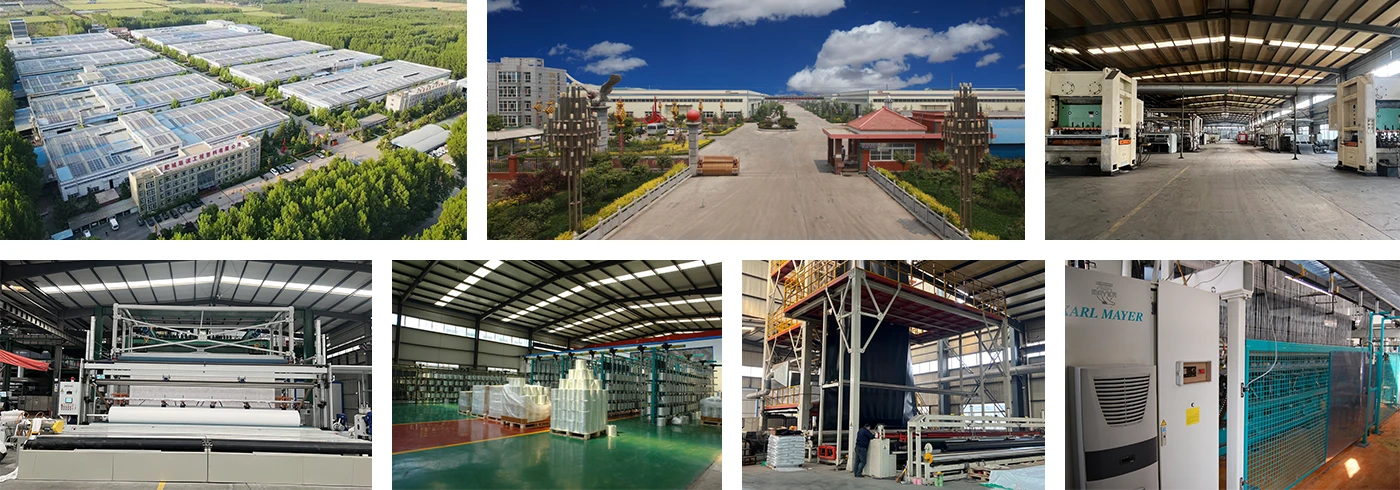
Our products have been exported to numerous countries and regions, including South Korea, Israel, Kuwait, Thailand, Canada, Panama, and Poland etc, earning a strong reputation in the market. Our management philosophy is to provide high-quality products and excellent service to our customers. We are committed to continuous innovation and product improvement as our core development strategy. We look forward to establishing long-term cooperative relationships with you.
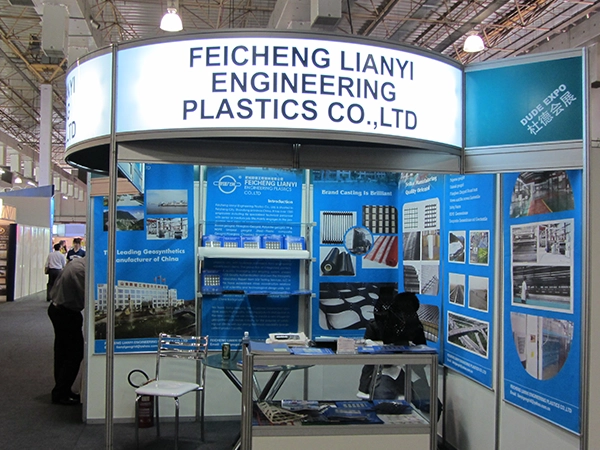
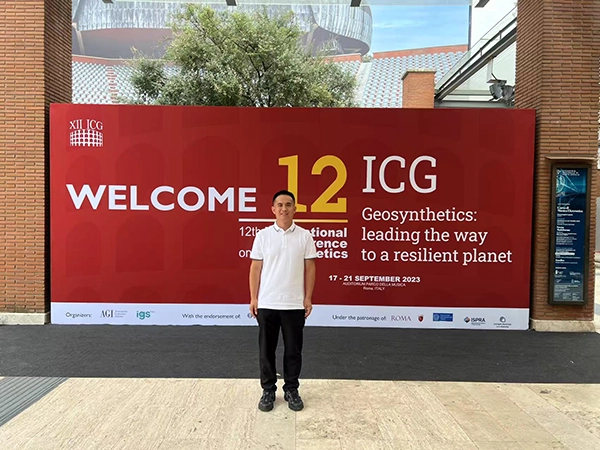




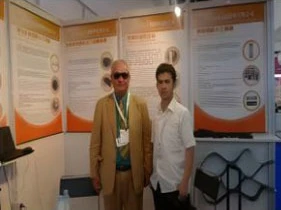

OUR CERTIFICATE
All our geosynthetic products are manufactured in adherence to the international standards for quality. We have laboratories and facilities where we test each product, allowing us to provide customers with data tests.
To ensure quality, we obtained different certifications including ISO9001, BBA, ISO 14001, and IVG. We are also certified by OHSAS 18001, RVS, ASQUAL, and Norgeospec.
Thus, ensuring that each product will be delivered with quality.

Our products are applied in these fields
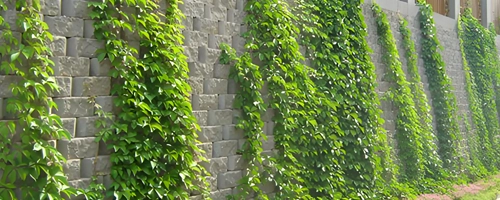
Retaining Walls
Geogrids are polymer-based geosynthetic materials used to reinforce soil behind retaining walls, installed in horizontal layers that extend into the backfill. By stabilizing the soil mass, they enhance the structural integrity and load-bearing capacity of the wall system.
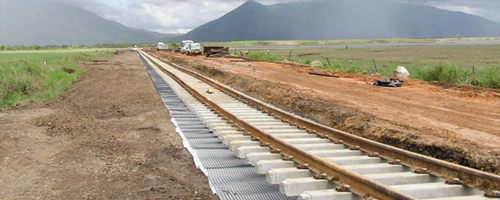
Soil Reinforcement
Geogrids and Geotextiles enhance soil stability by adding tensile reinforcement, improving strength and deformation resistance. These materials allow engineers to construct embankments on soft ground and design steeper earth slopes safely. Their reinforcing function provides crucial structural support where traditional soil alone would fail.
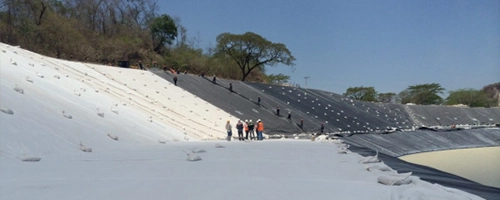
Drainage Systems
Geotextiles are used to prevent road base materials from penetrating into soft underlying soft subgrade, thus maintaining design thickness and roadway integrity. Geotextile separators also prevent fine-grained subgrade soils from being pumped into permeable, granular road bases
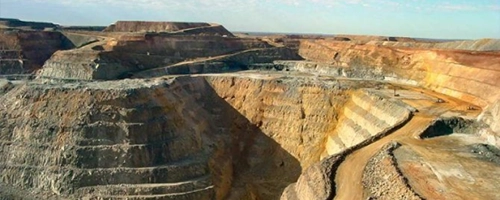
Erosion control
Geosynthetics provide immediate sediment stabilization while creating a supportive matrix for revegetation, with material selection based on site-specific hydraulic and topographical conditions. These engineered systems combine immediate erosion protection with long-term soil reinforcement, capable of withstanding high-velocity flows during both initial installation and subsequent vegetation establishment phases.

Filtration
Geotextiles retain soil particles while allowing water flow, utilizing a 'bridging' effect where larger particles help trap finer sediments, working best in one-directional flow. Their performance can be customized through fabric design and are often paired with drainage cores in geocomposites to prevent soil migration in drainage systems or protect riprap in waterways.
Mission
Our mission is to deliver innovative, high-quality geosynthetic solutions that empower sustainable development and enhance the resilience of infrastructure worldwide.
● Innovation: Continuously advancing our products and technologies to meet the evolving needs of the construction and environmental industries.
● Quality: Ensuring the highest standards of manufacturing to provide durable, reliable, and cost-effective geosynthetic materials.
● Sustainability: Promoting environmentally responsible practices by offering solutions that reduce environmental impact and support long-term ecological balance.
● Customer Focus: Building strong partnerships with our clients by understanding their unique challenges and delivering tailored solutions that exceed expectations.
● Global Impact: Contributing to the development of safer, more efficient, and sustainable infrastructure across the globe.
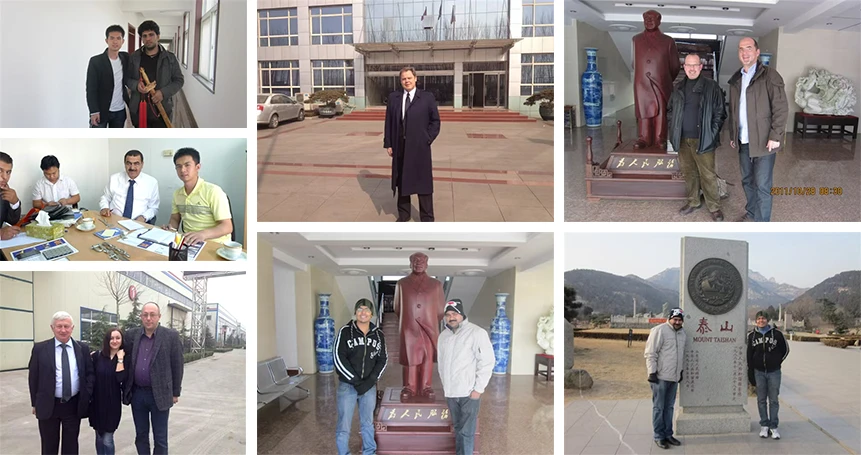
Can geotextiles be used with geogrids?
Request Information or Get a Quote
Lianyi welcomes the opportunity to work with you on your next infrastructure project. Click the link below to submit an electronic request or get contact information for our nearest location, and our team will get back to you promptly.
CONTACT US →GET A FREE QUOTE
RELATED PRODUCTS

